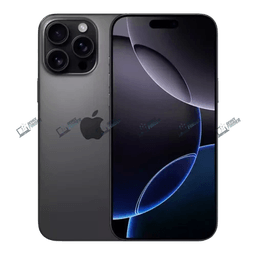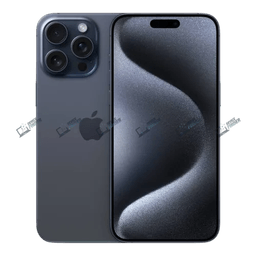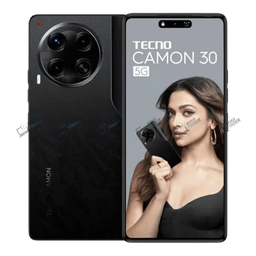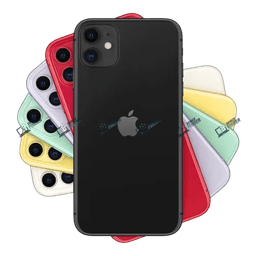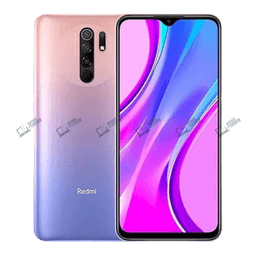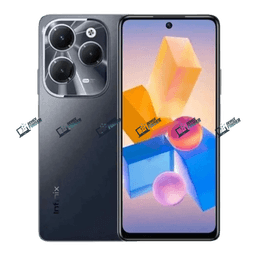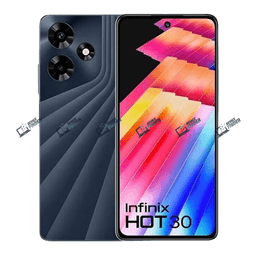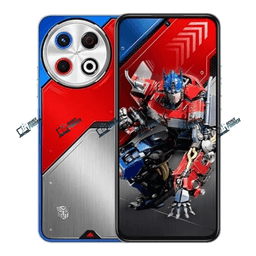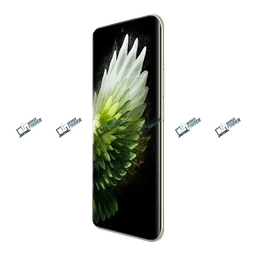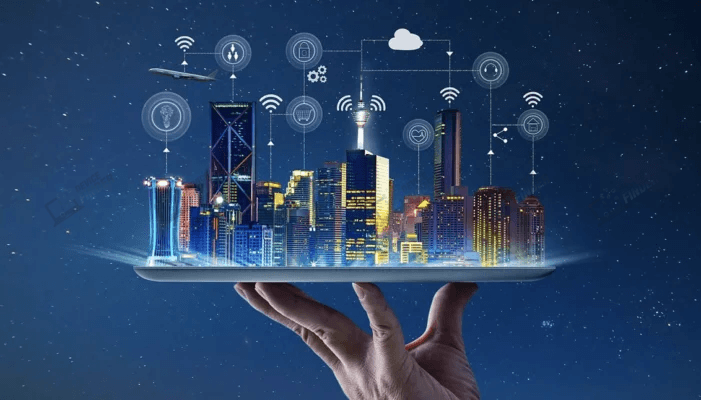
How Will IoT Shape Smart Cities and Businesses in 2025?
In the real world, however, IoT (Internet of Things) is like the vibranium of today’s technology world. With powerful technologies like edge computing and AI blending into IoT, we are transforming how devices communicate and make instant decisions. Sounds smart, doesn’t it?
Modern devices are getting smarter, and their interconnected communication is improving every day. Just as vibranium powers every innovation in Wakanda, IoT powers businesses worldwide, unlocking incredible opportunities across various industries. To stay ahead in this race, you must catch up with the latest IoT trends and understand how they can impact your business.
Without further delay, let’s explore the Top 5 Internet of Things Trends to Watch in 2025.
Internet of Things - IoT
IoT – surely, you have heard about it!
The Internet of Things refers to a network of physical objects equipped with sensors, software, and connectivity features that can collect and share data via the internet. Think of your home appliances, vehicles, or industrial machines. These smart devices can monitor surroundings, automate tasks, and increase productivity, making them one of the hottest technologies in recent years.
Last year, our predicted IoT trends created major changes across industries. 5G connectivity will play a big role in advancing AR and VR applications. Artificial Intelligence (AI) and Machine Learning (ML) grew together, boosting IoT capabilities. Edge computing has also gained importance by reducing server strain and enabling smarter data processing. Many of these trends support the development of Smart City infrastructure as well.
Now, as IoT adoption continues to rise, security and data protection have become top priorities. This has led to the introduction of new IoT data protection and privacy standards. Stronger security measures are now essential to protect data across networks and devices, creating a new wave of IoT innovation and industry trends.
So, let’s dive into the top IoT trends that will dominate 2025. Wakanda Forever!
Trend 1: The Internet of Blockchain Things
Since its creation, blockchain has changed how we view technology. Thanks to its decentralized structure, it is now transforming IoT applications. In 2025, this powerful combination will completely redefine IoT security. Blockchain ensures data safety across connected devices, creating more trust and transparency.
According to Markets and Markets, the global blockchain IoT market is projected to grow by USD 2,409 million by 2026, covering industries such as finance, agriculture, and transportation. Even Walmart, the retail giant, has implemented blockchain IoT to improve supply chain transparency and food safety. The company plans to have 65% of its stores managed by IoT automation by 2026.
Adam Draper, founder of Boost VC, perfectly summarized it by saying, “The blockchain does one thing: It replaces third-party trust with mathematical proof that something happened.”
In 2025, SMEs will increasingly use blockchain with IoT to automate secure data exchange and build scalable digital ecosystems. The combination of blockchain and IoT will grow rapidly, allowing safer and more reliable operations across industries.
My Takeaway:
- Improve data security and integrity in areas such as supply chain, telecom, and operations by integrating IoT and blockchain.
- Apply multi-factor authentication, secure password policies, and role-based access control (RBAC) through blockchain to strengthen IoT systems.
- Invest in blockchain-based IoT solutions to make your smart city or smart industry projects future-ready.
Trend 2: Modern Traffic Needs Modern Solutions
Yes, we are talking about smart traffic! In recent years, IoT has been integrated into traffic management systems to solve global congestion problems. McKinsey predicts that by 2025, cities using smart mobility technologies could reduce travel times by 15 to 20 percent, improving daily commutes and creating more efficient cities.
Smart cities are no longer a dream. With 5G connectivity, AI/ML enhancements, and better infrastructure, smart mobility powered by IoT is becoming the foundation of modern urban life.
One major technology to watch is Vehicle-to-Everything (V2X), where vehicles share data from sensors, cameras, and systems with other vehicles, pedestrians, and smart city infrastructure. It is IoT on a city-wide scale, shaping the next phase of Smart City development.
For example, Barcelona has been leading in this field since 2012. The city uses 500 kilometers of fiber optic cables and IoT sensors in traffic lights, parking areas, and roads to manage congestion and improve safety.
My Takeaway:
- Smart city planners should use IoT sensors to optimize traffic signals and improve road safety, especially with the growth of V2X systems.
- Developing cities with limited resources should integrate IoT into vehicles and traffic systems to increase efficiency.
- Urban planners should incorporate IoT-driven smart mobility solutions into their strategies to reduce travel time and enhance infrastructure.
Trend 3: Digital Twins in IoT Will Be a Win
Digital Twins gained attention in 2020, and in 2025, they will revolutionize asset management by creating real-time virtual versions of physical objects. Think of it as creating a digital replica that mirrors the performance of the real thing. This helps businesses monitor, simulate, and improve processes using IoT data.
According to Fortune Business Insights, the digital twin market is expected to grow from USD 6.75 billion in 2021 to USD 96.49 billion by 2029, at a CAGR of 40.6%. One of the most impressive uses of digital twins is in pharma and life sciences, where they simulate biological systems to test treatments and monitor health outcomes.
By using real-time IoT data, digital twins allow organizations to visualize behavior, enhance performance, and predict issues before they occur.
My Takeaway:
- Businesses with large-scale manufacturing operations should adopt IoT-based digital twins to simulate and optimize performance.
- Training programs, such as in aviation or the military, can use digital twins to create realistic simulation environments for better efficiency and sustainability.
- Hospitals and medical institutions can use digital twins of devices or organs to predict patient outcomes and improve treatments.
Trend 4: Voice-Activated IoT Devices Will Be the New Rage
“Alexa, how’s the traffic today?” Well, it would be better if IoT was handling it! Voice-activated IoT devices are rising in popularity, with 27% of the global population already using voice search. In 2025, voice-enabled IoT will grow rapidly due to its convenience and smart interaction features.
Voice assistants like Google Assistant, Amazon Alexa, and Apple’s Siri have already changed the way we interact with technology. Now, businesses in retail and fintech are using voice recognition to enhance the customer experience.
With IoT sensors, these systems are becoming even more powerful, offering seamless interactions and voice-based authentication through voice biometrics. This technology uses vocal traits like pitch and tone for secure verification, similar to the “singing vault” in Richie Rich!
A great example is Capital One, which introduced ENO, a voice-enabled virtual assistant that added a more human feel to client interactions, increasing customer trust and loyalty.
My Takeaway:
- Businesses should adopt voice commands in IoT devices to make user interactions more convenient and efficient.
- Explore voice biometrics for secure authentication across business touchpoints.
- Retailers can use voice-activated IoT systems to manage inventory, check stock levels, place orders, and get alerts in real-time.
Trend 5: AI and IoT, The Power Couple
Can we even discuss a tech trend without mentioning AI? Probably not! The global AIoT (Artificial Intelligence of Things) market was valued at USD 5.09 billion in 2023 and is expected to grow at a CAGR of 37.7% from 2024 to 2033.
The combination of AI and IoT is creating groundbreaking innovations. IoT sensors gather massive amounts of data, while AI analyzes it to make smart decisions, automate operations, and reduce human involvement.
AIoT is already making waves and will be even more advanced by 2025 with stronger AI models and faster 5G networks. Businesses will use this combo to ensure secure, real-time data connectivity and improved performance.
Siemens, for example, uses IoT-enabled AI through its MindSphere platform to connect factory devices, analyze real-time data, and predict maintenance needs. This helps reduce downtime and increase productivity. By 2025, AI and IoT will become essential for intelligent automation across industries.
My Takeaway:
- Businesses can use IoT sensors combined with AI for predictive maintenance, monitoring equipment in real-time to prevent costly breakdowns.
- AI-powered IoT systems can develop smarter manufacturing processes, optimized production lines, and improved efficiency.
- Supply chains can be optimized using AI-integrated IoT systems to track, forecast demand, and automate logistics.
Final Thoughts
It always pays to stay ahead of the curve!
Learn from the advanced minds of Wakanda. In 2025, we will see blockchain-enhanced IoT security, smart traffic systems improving city mobility, and AI-powered automation transforming industries. IoT technology trends are shaping a future full of innovation and intelligence. As IoT continues to blend into daily life, its importance across industries will only grow stronger. The future will be powered by smart technology and innovation.
Frequently Asked Questions
Q. 1. What are the 4 types of IoT?
Ans: The Internet of Things (IoT) includes four main categories:
- Consumer IoT (CIoT): Personal devices like smartphones and wearables.
- Commercial IoT: Used in healthcare, retail, and customer service.
- Industrial IoT (IIoT): Focused on manufacturing and industrial automation.
- Infrastructure IoT: Supports smart cities and transportation systems.
Q. 2. What are the future trends in IoT?
Ans: Future IoT trends include deeper use of AI for data analysis, wider 5G expansion, stronger cybersecurity, and the growth of smart city infrastructure for better urban management.
Q. 3. What is the future of IoT in 2030?
Ans: By 2030, IoT is expected to generate between USD 5.5 trillion to USD 12.6 trillion in global economic value. It will power smart homes, healthcare, agriculture, and industrial automation, deeply transforming how we live and work
